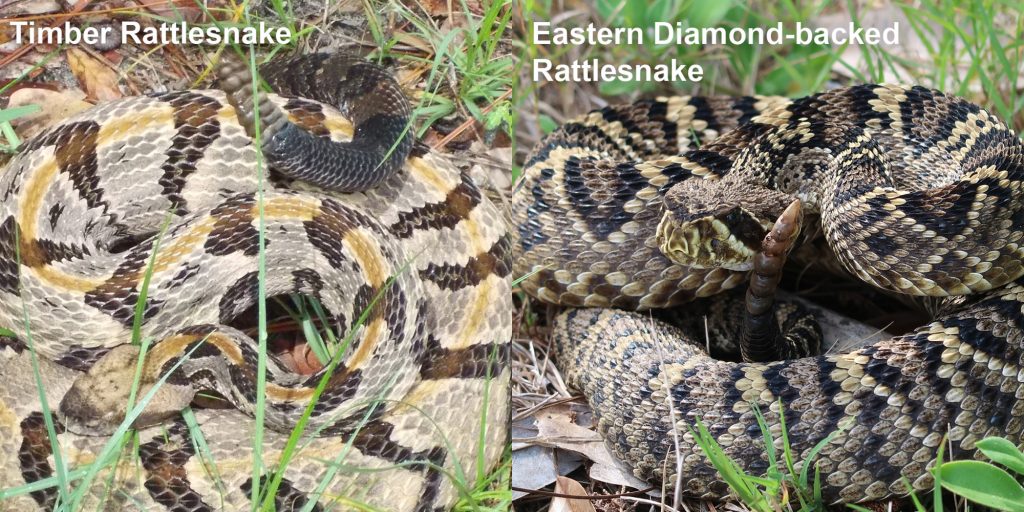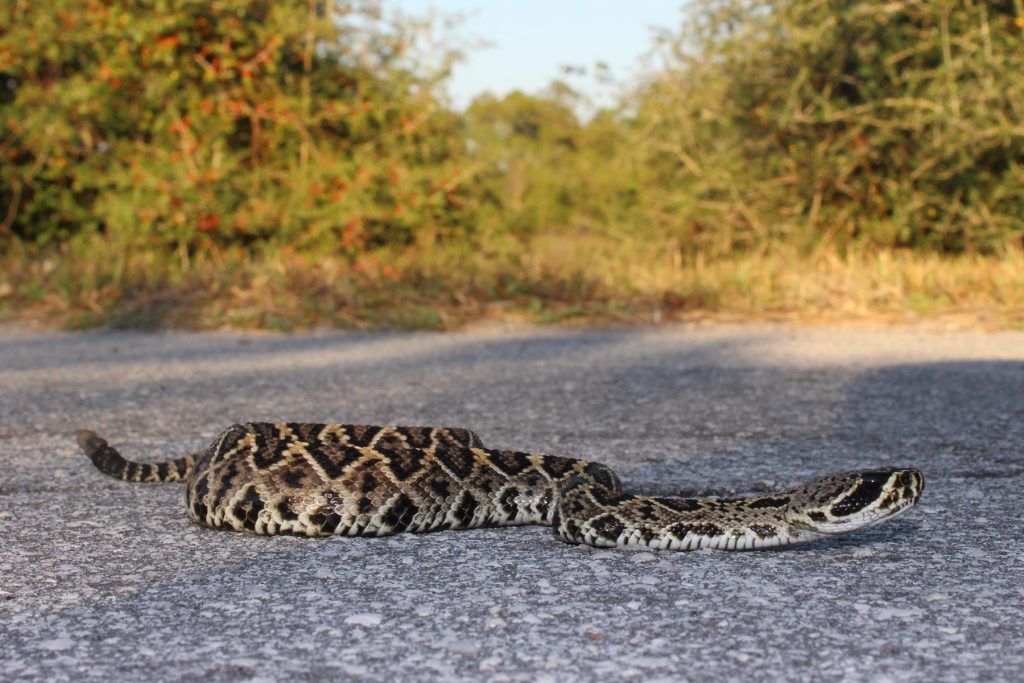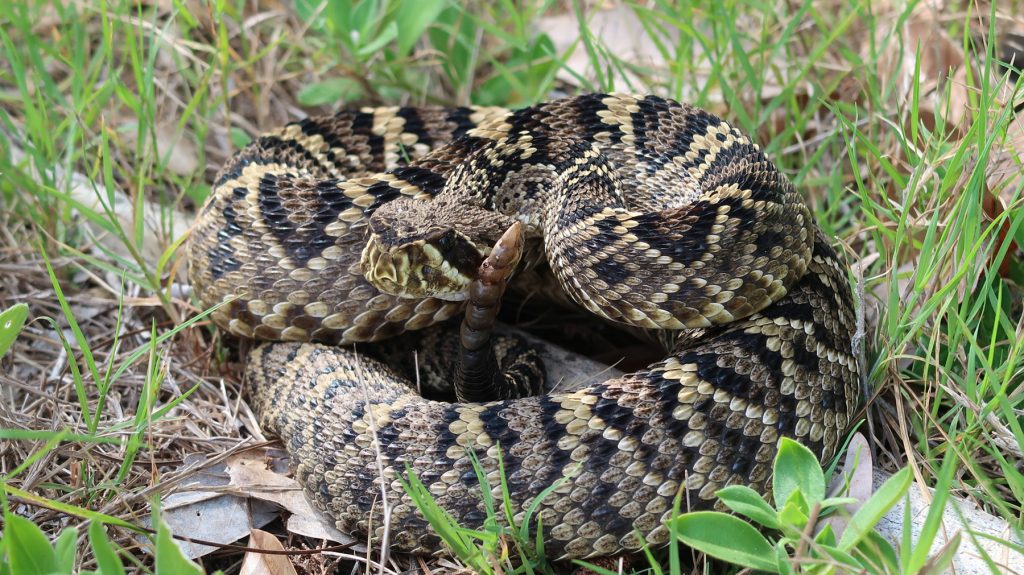VENOMOUS
Other common names
Eastern Diamondback Rattlesnake, Diamondback, Rattlesnake, Rattler
Basic description
Most adult Eastern Diamond-backed Rattlesnakes are about 33-72 inches (84-183 cm) in total length. This is a very large, heavy-bodied snake with a row of large dark diamonds with brown centers and cream borders down its back. The ground color of the body is brownish. The tail ends in a rattle, which is often held above the ground. The large and thick head is distinct from the neck and has a light bordered dark stripe running diagonally through each eye. The coloration of juveniles is the same as described for adults, and the tip of the tail of newborns ends in a “button”, which is the first segment of the future rattle.
Range in Florida
Eastern Diamond-backed Rattlesnakes are found throughout Florida and in every county. They also occur on many nearshore islands including many of the Florida Keys and several islands in the Gulf of Mexico in Levy (e.g., Cedar Keys) and Franklin (e.g., Dog, St. George, and St. Vincent islands) counties.
Assessment of risk to people and pets
VENOMOUS The Eastern Diamond-backed Rattlesnake is a large and impressive snake, and bites can be very dangerous to people and pets. The victim should seek immediate medical care from a physician or hospital experienced in treating snakebites. Eastern Diamond-backed Rattlesnakes are not aggressive and avoid direct contact with people and pets. Most bites occur when the snakes are intentionally molested or accidentally stepped on. This is a snake that should be simply left alone and not bothered.
Comparison with other species
Timber Rattlesnake (Crotalus horridus) Venomous The Timber Rattlesnake has black chevron-like crossbands, a reddish stripe down the middle of its back, and a black tail. This is the only other rattlesnake with which an Eastern Diamond-backed Rattlesnake might be confused in Florida.

Adult Eastern diamond-back rattlesnake. Photo courtesy of Luke Smith.
Share your observations
You can help scientists better understand the biology and distribution of this species by sharing your observations. Send photos or videos of interesting observations, along with associated information, by emailing the herpetology staff at the Florida Museum for documentation in the Museum’s Herpetology Master Database. You can also post your observations on iNaturalist.
Additional helpful information
Do you have snakes around your house? Learn how to safely co-exist with snakes.
Still have questions about snakes or identifications? Feel free to email the herpetology staff at the Florida Museum with your questions or feedback on this profile.
Banner photo courtesy of Luke Smith. Please credit any photographers on the page and see our copyright policy.

